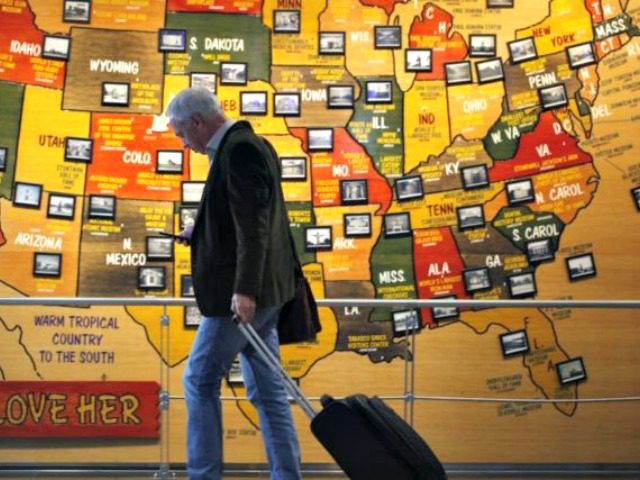Every state and most U.S. territories are now under a disaster declaration for the first time in American history in a bid to contain the fast-spreading and deadly novel coronavirus pandemic.
Meanwhile, the vast majority of states and some local jurisdictions, home to over 95 percent of the U.S. population of about 329.5 million, have issued some variation of a “stay at home” order for non-essential personnel to stem the spread of the viral outbreak.
U.S. President Donald Trump’s administration and some states are already preparing to open up parts of the country.
Speaking on NBC News on Monday, Robert Redfield, the director of the U.S. Centers for Disease Control and Prevention (CDC), reportedly proclaimed the United States is “nearing the peak,” but warned against dropping prevention measures like social distancing right away.
That will have to be “a step-by-step gradual process,” he declared. His comments echoed remarks by New York Gov. Andrew Cuomo who said Monday the “worst is over” in the state hardest hit by the outbreak, with over 195,000 cases and more than 10,000 deaths as of Monday evening.
In an article updated continuously to reflect the changes in the quarantine orders implemented across the United States, the New York Times revealed that as of last Tuesday, “At least 316 million people in at least 42 states, three counties, nine cities, the District of Columbia, and Puerto Rico are being urged to stay home.”
The “stay at home,” “shelter in place,” or “safer at home” directives began in California in mid-march.
News reports and some of the governors have described the coronavirus restrictions as unprecedented.
On Sunday, U.S. President Donald Trump also acknowledged that his move to approve disaster declarations for the vast majority of the United States is also without precedent.
“For the first time in history there is a fully signed Presidential Disaster Declaration for all 50 States,” Trump tweeted. “We are winning, and will win, the war on the Invisible Enemy!”
For the first time in history there is a fully signed Presidential Disaster Declaration for all 50 States. We are winning, and will win, the war on the Invisible Enemy!
— Donald J. Trump (@realDonaldTrump) April 12, 2020
The only U.S. territory that has not received a disaster designation is American Samoa, the Hill noted on Sunday.
President Trump reportedly approved the first major coronavirus-related disaster declaration for New York on March 20. Washington and California followed two days later.
Those three states are among the top 15 hardest-hit. New York is now the epicenter of the virus with the most cases and deaths.
The final disaster declaration, involving Wyoming, occurred on Saturday.
On Sunday, the Hill pointed out:
Within 22 days, Trump declared a major emergency in all 50 states and most territories through the Federal Emergency Management Agency (FEMA).
…
The U.S. Virgin Islands, the Northern Mariana Islands, Washington, D.C., Guam and Puerto Rico all received approved major disaster declarations. American Samoa is the only U.S. territory that has not received a disaster designation. … The FEMA declaration makes federal funding available to the states to use to fight the spread of the virus.
Several state and local jurisdictions have threatened legal penalties for ignoring coronavirus restrictions.
The Times noted:
Under a mass of state and local directives that use a variety of definitions, like “shelter in place” or “safer at home,” people can generally still leave their homes for necessities — to go to the grocery store, to go to the doctor and to get fresh air. Still, the changes so fundamentally alter life and the economy that some states have resisted increasingly urgent calls to shut down.
The U.S. federal government has issued social distancing and other guidelines to combat the viral outbreak but stopped short of implementing a nationwide quarantine, leaving it up to the states and localities to implement and enforce restrictions.
As a result, there is currently a patchwork of local and state ordinances that use different terms, including “shelter in place,” “stay at home,” or “safer at home.” Coronavirus is affecting the various areas across the United States differently, with some states experiencing a higher infection and death rate than others.
The coronavirus had infected over 577,00 people and killed more than 23,000 in the United States as of Monday evening, according to the Johns Hopkins University tracker.
Although several news outlets report that the United States has more cases and deaths than any other country in the world, coronavirus data from China, the birthplace of the virus, is unreliable.
The Chinese Communist Party has hidden the extent of the outbreak in China, U.S. officials have confirmed.
Many more people live in China than in the United States. The Chinese population, at an estimated 1.4 billion, is more than four times larger than that of the United States (329.5 million).

COMMENTS
Please let us know if you're having issues with commenting.